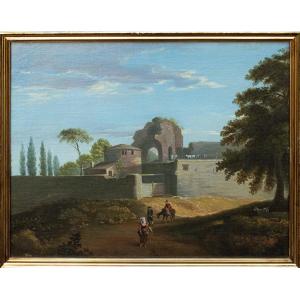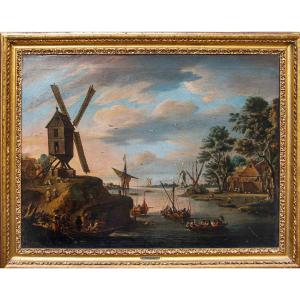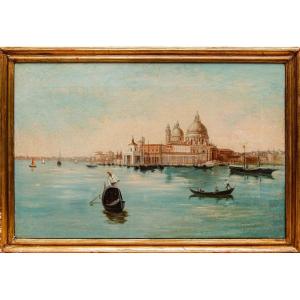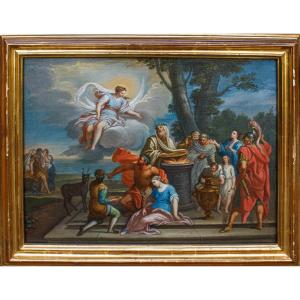View of the Temple of Minerva Medica
Oil on canvas, 65 x 78 cm - with frame 71.5 x 85 cm
The painting bears a traditional attribution to François Marius Granet (Aix-en-Provence, 1775 - 1849). The painter was a pupil of David but from 1802 to 1819 he lived in Rome, as evidenced by a series of paintings representing views of the city and especially of the Roman countryside (Ponte San Rocco at Tivoli, 1810-20, MoMA, New York ), then returned there between 1825 and 1830. In the Eternal City, Granet devoted himself to landscape painting, drawing inspiration from the landscape painting of Gaspard Dughet and Van Lint, expressing a neoclassical sensibility but nevertheless imbued with a romantic vein, capable of evoking 'the spirit of the place' (see L. Salerno, 'Painters of views in Italy (1580 - 1830)', Rome 1991, p. 425, S.85). The canvas represents a view of the temple of Minerva Medica located on the Esquiline, a decagonal construction covered by a 25-meter dome, but in reality it is the nymphaeum of the 'Horti Liciniani', the large residence with gardens that belonged to the Emperor Gallienus in the third century AD. The temple has been the subject of numerous representations in painting, which recall the remains of antiquity, such as the engraving by Giovan Battista Piranesi (1756), the painting by Paolo Anesi with the View of the Temple of Minerva Medica (Private collection, Rome) and finally that of Jean Baptiste Pillement, kept at the Warsaw Museum.


















































 Le Magazine de PROANTIC
Le Magazine de PROANTIC TRÉSORS Magazine
TRÉSORS Magazine Rivista Artiquariato
Rivista Artiquariato